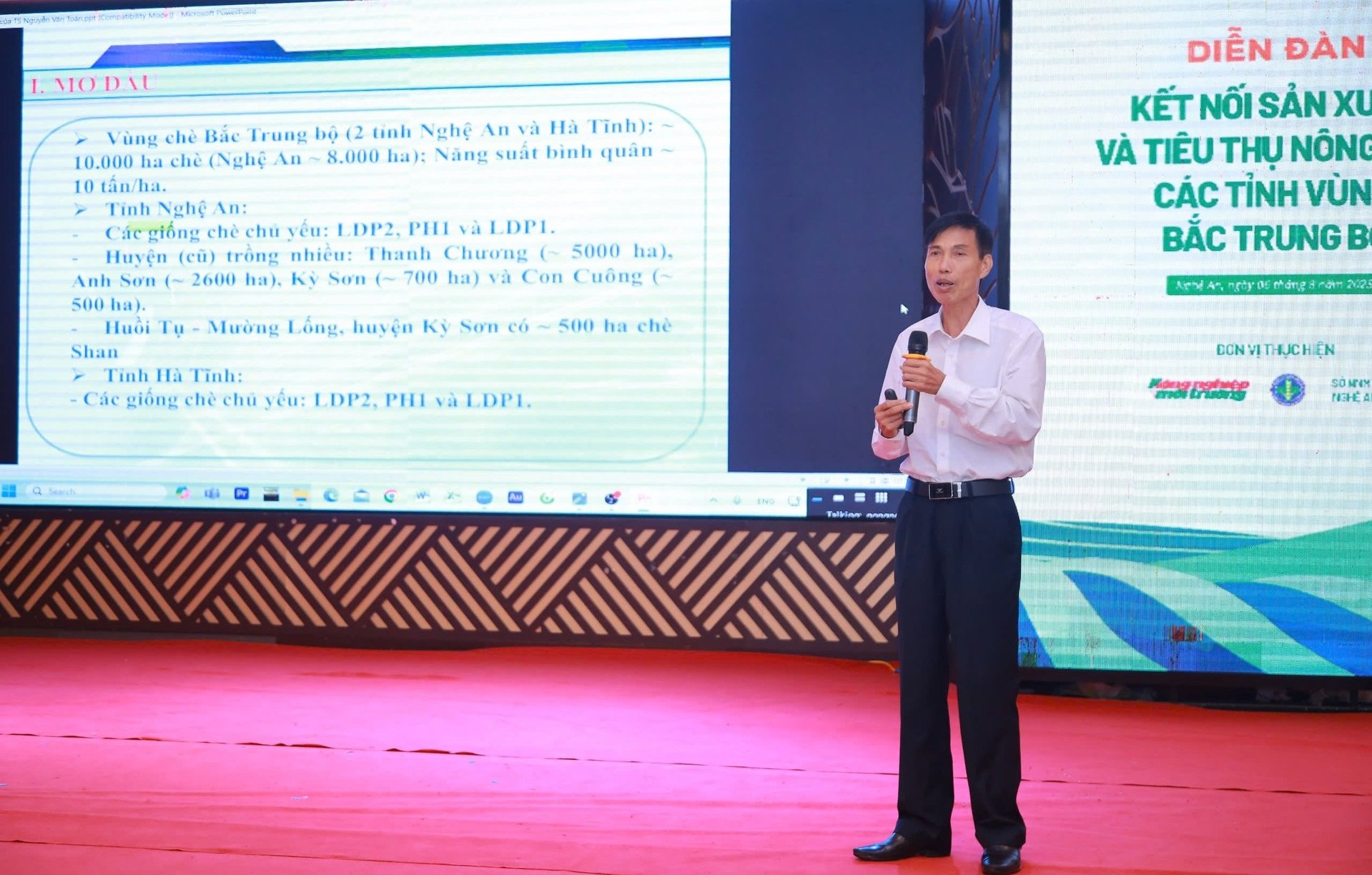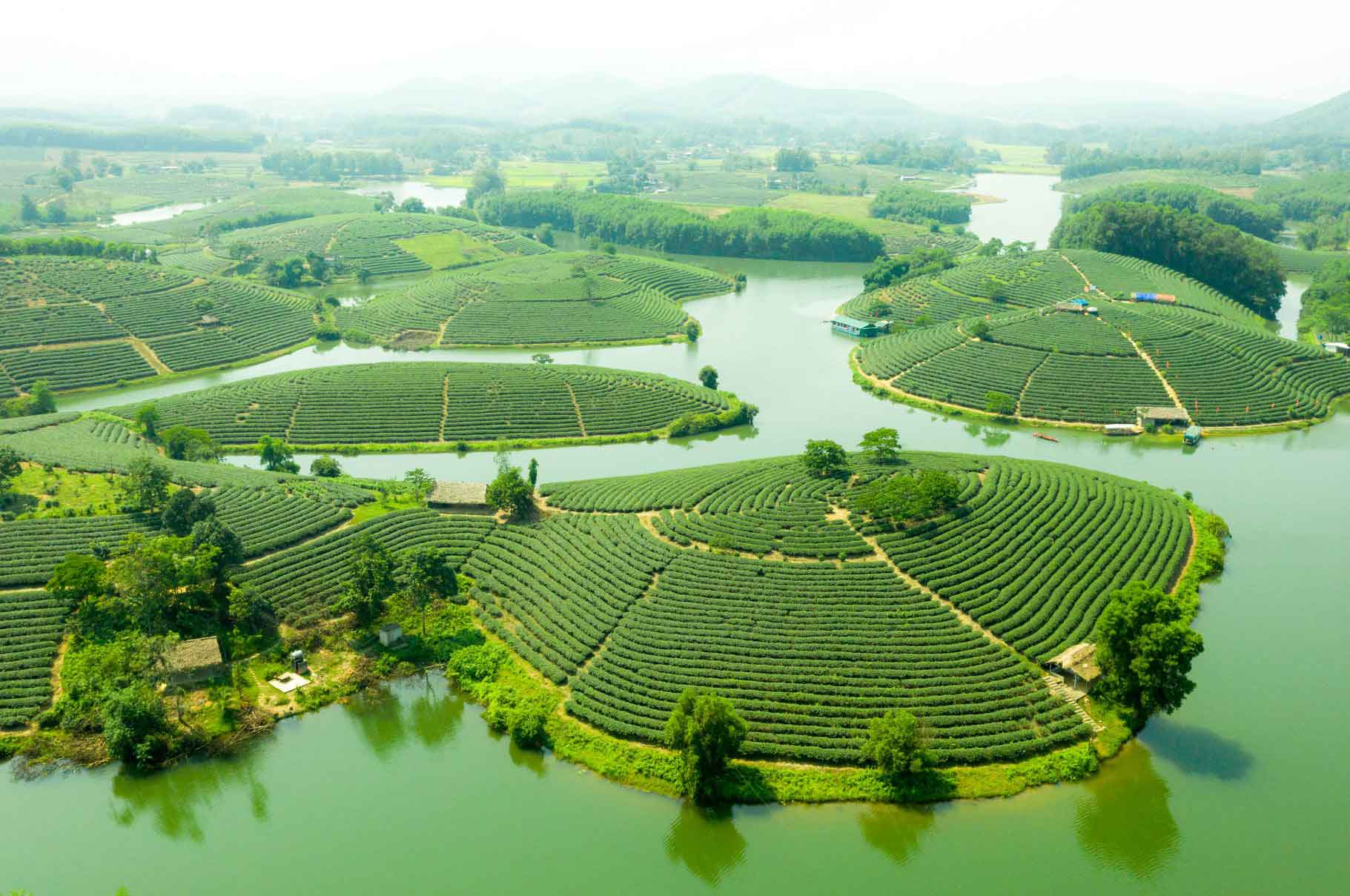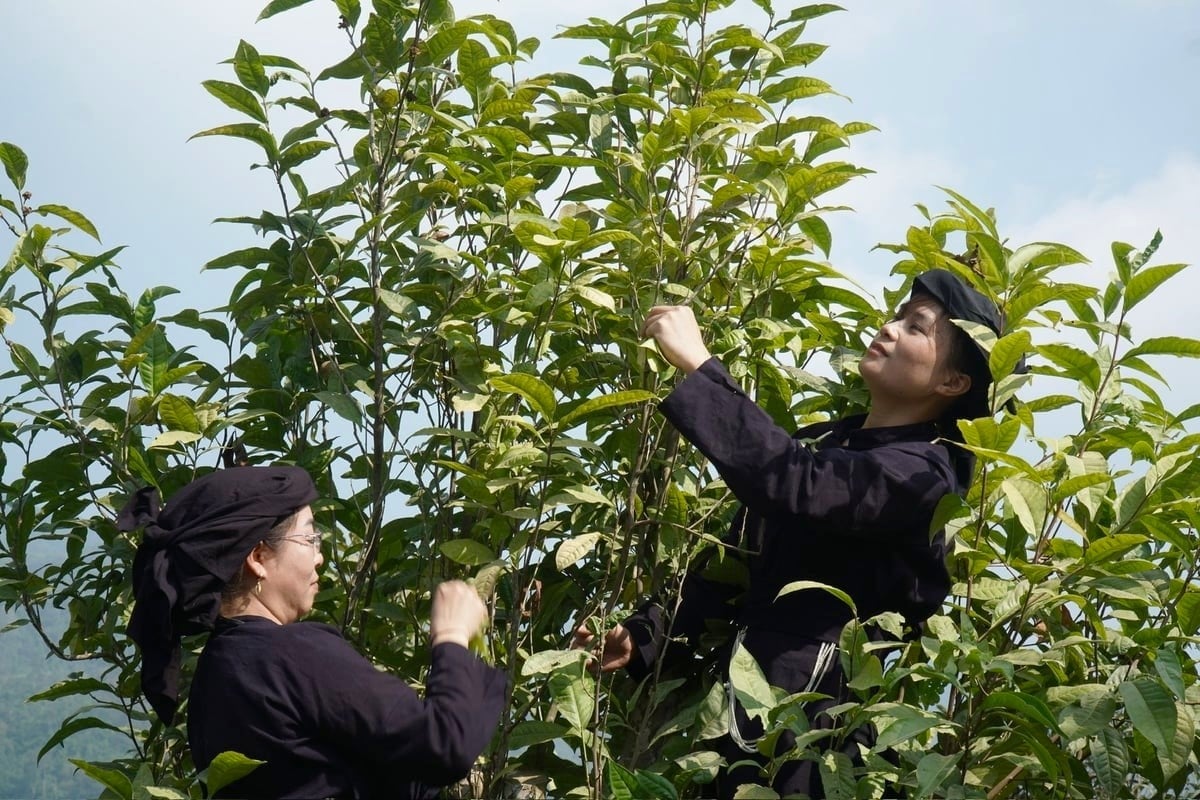December 5, 2025 | 07:35 GMT +7
December 5, 2025 | 07:35 GMT +7
Hotline: 0913.378.918
December 5, 2025 | 07:35 GMT +7
Hotline: 0913.378.918
The tea-growing region of North Central Vietnam, encompassing two provinces of Nghe An and Ha Tinh, is currently facing significant challenges. Despite its long history and favorable natural conditions, tea production in the region remains inefficient, with low average yields and modest incomes for tea farmers. This has led to difficult living conditions for many local households who rely on tea as a key source of livelihood.
Dr. Nguyen Van Toan, former Director of the Northern mountainous Agriculture and Forestry Science Institute, argues that revitalizing the tea industry in North Central Vietnam requires a comprehensive and synchronized approach. He emphasizes the urgent need to modernize the sector, from adopting advanced technology and organizing production to diversifying tea products, building brands, attracting investment, and expanding market access. At the heart of this transformation lies the transition to high-quality tea varieties grown and processed under value chain models.

Dr. Nguyen Van Toan delivered a speech at the forum on Connecting agricultural production and consumption in the North Central provinces co-implemented by Vietnam Agriculture and Nature Newspaper on August 6. Photo: NB Linh.
With an estimated total tea cultivation area of nearly 10,000 hectares, the average yield across the region stands at approximately 10 tons per hectare. In Nghe An, the main varieties currently grown are LDP2, PH1, and LDP1 that have been cultivated for several decades. One notable exception is about 500 hectares of Shan tea grown at altitudes between 1,200 and 1,500 meters in the misty highlands of Huoi Tu and Muong Long, Ky Son district. Similarly, Ha Tinh province continues to rely on the same aging tea varieties, limiting both quality and profitability.
To support this vision, the Northern mountainous Agriculture and Forestry Science Institute has selected and bred 31 new tea varieties. Based on years of field testing and evaluation, these varieties are grouped into 3 categories, each tailored to different processing goals and export demands:
Premium tea: For high-end specialty teas such as oolong, fragrant green tea, Mao Jian, and Bi Luo Chun, the recommended varieties include Hương Bac Son, VN15, and Kim Tuyen. These teas are highly sought after in both domestic and international markets due to their superior aroma and quality.
High-quality green tea: These include LCT1, LP18, TRI 5.0, PH21, CNS141, CNS183, and PH8. Known for their strong yields and excellent flavor profiles, they are well-suited for both domestic consumption and export.
High-quality black tea: Including TRI 5.0, PH8, PH12, PH14, TC4, PH276, and PH22. These are optimized for producing black tea that meets international quality standards.

The tea-growing area in the North Central region is mainly concentrated in Nghe An and Ha Tinh provinces (in picture is Thanh Chuong Tea Island, Nghe An). Photo: Ngoc Tu.
Among these, three standout varieties (PH8, CNS-831, and TRI 5.0) demonstrate exceptional versatility, offering high yields, strong drought and heat tolerance, and suitability for both green and black tea processing.
Dr. Nguyen Van Toan proposes variety structure for 2025 - 2040: "For the strategic replanting and expansion of tea cultivation in the region through to 2040, Dr. Toan proposes the following structure: 10 - 15% of the area should be planted with premium green tea varieties: Huong Bac Son, VN15, and Kim Tuyen. 30 - 35% should focus on high-quality green tea varieties: LCT1, PH8, CNS-831, and TRI 5.0. 50 - 60% should be dedicated to high-quality black tea production using TRI 5.0, PH8, CNS-831, along with the existing Shan tea areas in Nghe An.
The newly developed tea varieties in the North Central region are cultivated and maintained according to current standard practices. However, several specialized techniques must be implemented to ensure optimal results. These include establishing a three-tier shade tree system (with upper, middle, and lower canopy layers), and providing temporary shade for newly planted tea bushes. Tea gardens should also be equipped with irrigation systems from the initial planting stage particularly in areas designated for cultivating high-end tea varieties and mulching should be applied regularly to retain soil moisture.
"These specialized cultivation techniques and strict processing standards are mandatory requirements for the successful development of new premium tea varieties," emphasized Dr. Nguyen Van Toan.
According to the Vietnam Tea Association, the tea industry’s performance in 2024 reflects a clear opportunity. Nearly 150,000 tons of tea were exported at an average price of USD 1.75/kg, generating over USD 250 million in revenue. The domestic market consumed around 55,000 tons, at a much higher average price of USD 7.50/kg, generating an estimated USD 410 million in value.
In export structure, he shares: "Green tea (including jasmine-scented and oolong) represented 60% of volume and 70% of value, with an average price of USD 1.92/kg. Black tea made up 39% of volume and 30% of value, with a lower average price of 1.26/kg."
While domestic consumption accounted for only one-third of the total tea volume, green tea generated 1.64 times more revenue than exports, thanks to a unit price over 4.3 times higher.

Transitioning to the cultivation of high‑quality tea varieties structured along value chains is a decisive strategic move. Photo: Ngoc Tu.
Dr. Nguyen Van Toan believes that rapidly transitioning to quality green tea varieties, especially those suited for premium processing, will allow the North Central region to build a robust raw material base and enhance both value and competitiveness. For domestic markets, green tea remains the most valuable product segment. Leveraging existing varieties like LDP1 for scented green tea, and processing Shan tea into high-end black or green tea for niche markets, can further expand value chains.
Ultimately, Dr. Toan affirms that specialized cultivation techniques, high-performing varieties, and market-driven processing are essential pillars for transforming the tea sector in Nghe An and Ha Tinh. With coordinated efforts, the North Central tea industry can shift from stagnation to sustainability delivering better livelihoods for farmers and higher value for Vietnamese tea.
Provinces like Thanh Hoa have also identified that during the 2026 - 2030 period, it is essential to penetrate export markets in a deeper and more sustainable manner by closely linking production chains with science and technology, deep processing, and brand development.

(VAN) As of 2025, the ASEAN region has a total of 69 ASEAN Heritage Parks recognized across its 10 member states. Among them, Viet Nam contributes 15 ASEAN Heritage Parks.

(VAN) Yok Don National Park has high biodiversity with numerous endemic plant and animal species, and it is also the only dipterocarp forest ecosystem conservation area in Viet Nam.

(VAN) Viet Nam and Brunei signed two important MOUs on fisheries and IUU, expanding cooperation in agriculture, the environment, and Halal exports, aiming to substantively implement joint projects.

(VAN) The Viet Nam Coconut Association worked with the International Finance Corporation (IFC) and businesses to promote the supply chain, enhance competitiveness, and develop the coconut industry sustainably.
![Hue aims for Net Zero: [2] Pioneering low-emission tourism](https://t.ex-cdn.com/nongnghiepmoitruong.vn/608w/files/huytd/2025/12/04/0633-dulichzero-4-095634_236-161125.jpg)
(VAN) The ancient capital of Hue has developed Net Zero tourism products and models, aiming to reduce carbon emissions and pioneer the establishment of Viet Nam's green tourism destination.

(VAN) C.P. Viet Nam has announced the successful completion of its goal to plant 1.5 million trees during the 2021-2025 period, a key milestone within company's long-term ESG strategy and its roadmap for emission reduction.

(VAN) This is an initiative of MAE aimed at creating a unified coordination mechanism to implement agricultural cooperation programs with developing countries.